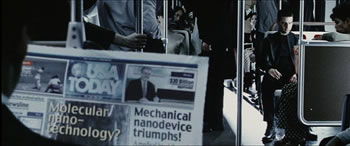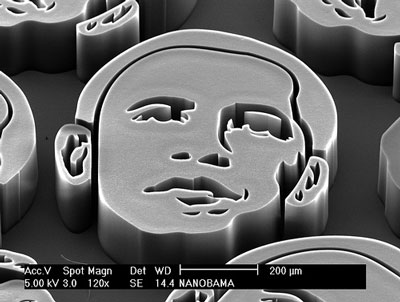Commenting on my post, Nano Powering The Auto Revolution, Dexter Johnson at IEEE Spectrum writes:
The long-time nanotechnology blogger Howard Lovy at Nanobot presents some possibilities for how nanotechnology is fueling innovation in the auto industry. While it is good to have Mr. Lovy blogging again, and he is certainly someone who is uniquely qualified to write on both nanotechnology and the auto industry, I am hard pressed to extend his optimism for the automobile to the innovative sensibilities of Detroit automakers.
...
The problem is that the examples he cites in the article involve GE (while quite a large multi-national, it is not an automaker), A123Systems, and the all electric Tesla, the product of one man with a vision. All these companies are quite different than Detroit’s big three automakers. More here
First of all, thank you, Dexter. It's good to be back after taking five months off. You wouldn't believe the summer and autumn I've had.
I took time off for an experience that was eye-opening and life-changing. Even here in Michigan, in the heart of the Rust Belt, where we are being hit first and hit hardest by the worldwide economic slump, the poor just don't have a chance. They are cycled and recycled through a legal system where justice is for sale and only the rich, powerful and politically or legally connected come out unscathed. The problem is far worse, the system far more corrupt than I had ever previously imagined.
I will write much more about this in the future.
This is also related to the downfall of the auto industry that Dexter discusses. Here in Michigan, more and more of us are desperate ... and feel powerless and small. We see the captains of our formerly glorious automotive industry flying private jets to Washington so they can beg Congress for handouts.
The Big Three are dead, yet long live the auto industry. It's alive in the innovation coming not only from the small companies working on technologies like long-lasting, safe (and nanotech-based) lithium ion batteries for electric vehicles, but also divisions within the major auto companies and suppliers.
Toyota's doing it. Even General Motors is doing it.
But other companies, great and small, pick up where the major auto companies have failed miserably. I would argue, Dexter, that divisions within GE working on automotive technologies are, indeed, automakers. A123 Systems is an automaker. And that is true all the way down the supply chain to the companies and scientists supplying and developing the improved nanomaterials for catalysts and batteries.
If the auto industry were only the Big Three -- and not also the chain of innovation and manufacturing -- then my home state would not be in the horrible condition it is now (and even bottom-feeding writers like me would be able to find work).
Backgrounder
Nano powering the auto revolution
Who's driving the revolution?










